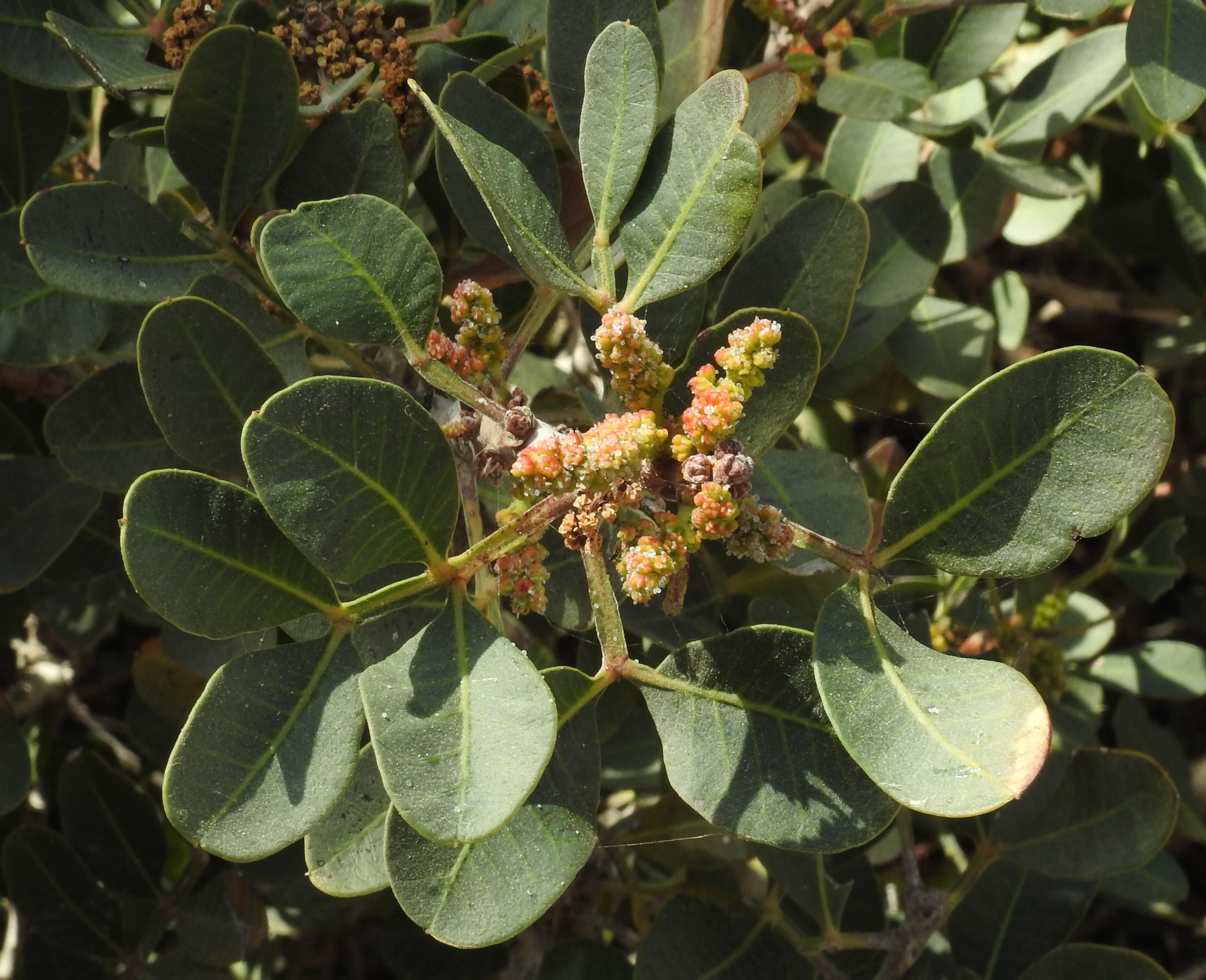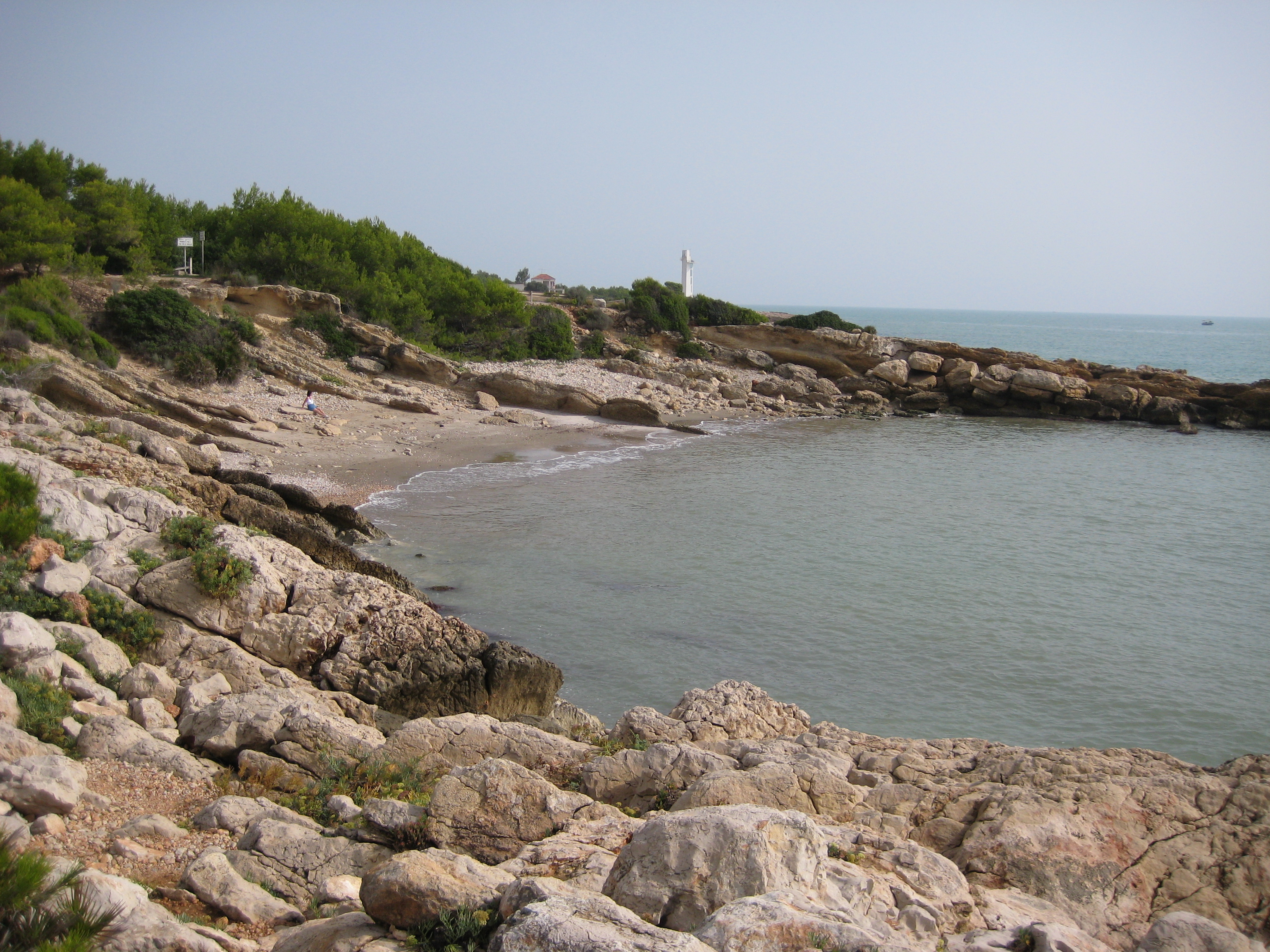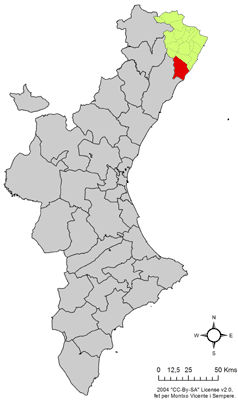|
Serra D'Irta
Serra d'Irta (, es, Sierra de Irta) is an 18.8 km long mountain range in the Baix Maestrat comarca, Valencian Community, Spain. Its highest point is Pico Campanelles (573 m). Location The Serra d'Irta stretches in a northeast-southwest direction south of the Vinaròs plain, its northern limit. It is located right by the Mediterranean coastline, rising on the eastern side of the road between Barcelona and Valencia. Its southern limit is near Alcossebre. This mountain range is covered with Maquis shrubland, including ''Juniperus oxycedrus'', ''Calicotome spinosa'', '' Pistacia lentiscus'' and '' Anthyllis cytisoides'' shrubs. Some of the lower slopes facing inland are planted with olive, almond and carob trees. In spite of the mountain area having been officially declared a Natural Park, there has been heavy urbanization on the slopes of the mountain having a sea view towards the northern end of the range next to Peníscola. There are castles and watchtowers of Moo ... [...More Info...] [...Related Items...] OR: [Wikipedia] [Google] [Baidu] |
List Of Mountains In The Valencian Community
This is a list of mountains in the Valencian Community of Spain. See also *List of mountains in Aragon *List of mountains in Catalonia *Sistema Ibérico * Catalan Mediterranean System *Prebaetic System Sources * VV.AA.(1999), ''Atlas Escolar del País Valencià'', PUV (València), 50 pàg. * ICV, ''Institut Cartogràfic Valencià''.Topònims External links {{commons category, Mountains of the Land of ValenciaMountains in the Land of Valencia |
Pistacia Lentiscus
''Pistacia lentiscus'' (also lentisk or mastic) is a dioecious evergreen shrub or small tree of the genus '' Pistacia'' native to the Mediterranean Basin. It grows up to tall and is cultivated for its aromatic resin, mainly on the Greek island of Chios and around the Turkish town of Çeşme.''Pistacia lentiscus'' L. a Mansfeld's Database Taxonomy Description  The ...
The ...
[...More Info...] [...Related Items...] OR: [Wikipedia] [Google] [Baidu] |
Catalan Pre-Coastal Range
The Catalan Pre-Coastal Range ( ca, Serralada Prelitoral Catalana) is a system of mountain ranges running parallel to the Mediterranean Sea coast in Catalonia. It is part of the Catalan Mediterranean System. Its main axis runs between the Catalan Transversal Range and the Serra de l'Espina, which connects with the Ports de Tortosa-Beseit, part of the Iberian System. The highest point is 1.706,7 m at the Montseny Massif. Mountain ranges From North to South: * Les Guilleries *Montseny Massif *Sant Llorenç de Munt *Montserrat * Serra de Queralt, Bellprat * Picorandan *Serra de Prades * Montsant *Serra de Llaberia * Tivissa-Vandellòs Mountains. Towards the southern end of the Catalan Pre-Coastal Range there are certain coastal mountain ranges like los Dedalts, Moles del Taix and Serra de la Mar which —lacking a traditional geographical name as a group— have been recently named as the 'Tivissa-Vandellòs Mountains' ''(Muntanyes de Tivissa-Vandellòs)''. These are included i ... [...More Info...] [...Related Items...] OR: [Wikipedia] [Google] [Baidu] |
Caves
A cave or cavern is a natural void in the ground, specifically a space large enough for a human to enter. Caves often form by the weathering of rock and often extend deep underground. The word ''cave'' can refer to smaller openings such as sea caves, rock shelters, and grottos, that extend a relatively short distance into the rock and they are called ''exogene'' caves. Caves which extend further underground than the opening is wide are called ''endogene'' caves. Speleology is the science of exploration and study of all aspects of caves and the cave environment. Visiting or exploring caves for recreation may be called ''caving'', ''potholing'', or ''spelunking''. Formation types The formation and development of caves is known as ''speleogenesis''; it can occur over the course of millions of years. Caves can range widely in size, and are formed by various geological processes. These may involve a combination of chemical processes, erosion by water, tectonic forces, microorga ... [...More Info...] [...Related Items...] OR: [Wikipedia] [Google] [Baidu] |
Shaft Mining
Shaft mining or shaft sinking is the action of excavating a mine shaft from the top down, where there is initially no access to the bottom. Shallow shafts, typically sunk for civil engineering projects, differ greatly in execution method from deep shafts, typically sunk for mining projects. Shaft sinking is one of the most difficult of all mine development methods: restricted space, gravity, groundwater and specialized procedures make the task quite formidable. Shafts may be sunk by conventional drill and blast or mechanised means. Historically, mine shaft sinking has been among the most dangerous of all the mining occupations and the preserve of mining contractors called sinkers. Today shaft sinking contractors are concentrated in Canada, Germany, China and South Africa. The modern shaft sinking industry is gradually shifting further towards greater mechanisation. Recent innovations in the form of full-face shaft boring (akin to a vertical tunnel boring machine) have shown ... [...More Info...] [...Related Items...] OR: [Wikipedia] [Google] [Baidu] |
Alcalà De Xivert
Alcalà de Xivert (; es, Alcalá de Chivert ) is a town and municipality in the Baix Maestrat comarca, province of Castelló, Valencian Community, Spain. Geography The main town is located inland in a flat valley between the two mountain ranges of Serra d'Irta and Serra de les Talaies. There is no river in the valley; instead, the water emerges in natural ponds known as ''basses''. History Its castle occupied a strong position for the control of the routes along the Mediterranean coast. Here stood a Moorish castle (the name of the town derives from Arabic ''al-qalat'' = "the castle") that was captured by James I of Aragon in 1234, who also resettled the place with Christian villagers. On 30 August 1905, scientists came from all over the world to Alcalà de Xivert to watch a total solar eclipse which covered an area from the coast of North Africa to the North-East of Spain. In contemporary times the economy of the town is devoted mainly to tourism, with several beaches a ... [...More Info...] [...Related Items...] OR: [Wikipedia] [Google] [Baidu] |
Santa Magdalena De Polpís
Santa Magdalena de Polpís (, es, Santa Magdalena de Pulpis) is a town and municipality in the Baix Maestrat comarca, province of Castelló, Valencian Community, Spain. The town is located inland in a flat valley between the two mountain ranges of Serra d'Irta and Serra de les Talaies. It is a rural dryland farming town with only marginal industrial activity, where the main cultivation is olive, almond and carob trees, as well as some orange trees in irrigated patches. There is no river in the valley, instead the water emerges in natural ponds known as ''basses''. The main celebration in Santa Magdalena de Polpís is the Festes patronals in honor of Saint Mary Magdalene. History Like neighboring Alcalà de Xivert its castle was an important bulwark in Moorish times and a village developed at the feet of the castle, eventually giving origin to the present-day town. Santa Magdalena de Polpís suffered much during the Spanish Civil War (1936–1939) when the fascist troo ... [...More Info...] [...Related Items...] OR: [Wikipedia] [Google] [Baidu] |
Moorish
The term Moor, derived from the ancient Mauri, is an exonym first used by Christian Europeans to designate the Muslim inhabitants of the Maghreb, the Iberian Peninsula, Sicily and Malta during the Middle Ages. Moors are not a distinct or self-defined people. The 1911 ''Encyclopædia Britannica'' observed that the term had "no real ethnological value." Europeans of the Middle Ages and the early modern period variously applied the name to Arabs and North African Berbers, as well as Muslim Europeans. The term has also been used in Europe in a broader, somewhat derogatory sense to refer to Muslims in general,Menocal, María Rosa (2002). ''Ornament of the World: How Muslims, Jews and Christians Created a Culture of Tolerance in Medieval Spain''. Little, Brown, & Co. , p. 241 especially those of Arab or Berber descent, whether living in Spain or North Africa. During the colonial era, the Portuguese introduced the names "Ceylon Moors" and " Indian Moors" in South Asia and Sri L ... [...More Info...] [...Related Items...] OR: [Wikipedia] [Google] [Baidu] |
Watchtower
A watchtower or watch tower is a type of fortification used in many parts of the world. It differs from a regular tower in that its primary use is military and from a turret in that it is usually a freestanding structure. Its main purpose is to provide a high, safe place from which a sentinel or guard may observe the surrounding area. In some cases, non-military towers, such as religious towers, may also be used as watchtowers. History Military watchtowers The Romans built numerous towers as part of a system of communications, one example being the towers along Hadrian's Wall in Britain. Romans built many lighthouses, such as the Tower of Hercules in northern Spain, which survives to this day as a working building, and the equally famous lighthouse at Dover Castle, which survives to about half its original height as a ruin. In medieval Europe, many castles and manor houses, or similar fortified buildings, were equipped with watchtowers. In some of the manor houses of weste ... [...More Info...] [...Related Items...] OR: [Wikipedia] [Google] [Baidu] |
Urbanization
Urbanization (or urbanisation) refers to the population shift from rural to urban areas, the corresponding decrease in the proportion of people living in rural areas, and the ways in which societies adapt to this change. It is predominantly the process by which towns and cities are formed and become larger as more people begin living and working in central areas. Although the two concepts are sometimes used interchangeably, urbanization should be distinguished from urban growth. Urbanization refers to the ''proportion'' of the total national population living in areas classified as urban, whereas urban growth strictly refers to the ''absolute'' number of people living in those areas. It is predicted that by 2050 about 64% of the developing world and 86% of the developed world will be urbanized. That is equivalent to approximately 3 billion urbanites by 2050, much of which will occur in Africa and Asia. Notably, the United Nations has also recently projected that nearly all gl ... [...More Info...] [...Related Items...] OR: [Wikipedia] [Google] [Baidu] |
Carob Tree
The carob ( ; ''Ceratonia siliqua'') is a flowering evergreen tree or shrub in the Caesalpinioideae sub-family of the legume family, Fabaceae. It is widely cultivated for its edible fruit pods, and as an ornamental tree in gardens and landscapes. The carob tree is native to the Mediterranean region and the Middle East. Portugal is the largest producer of carob, followed by Italy and Morocco. In the Mediterranean Basin, extended to the southern Atlantic coast of Portugal (i.e. the Algarve region) and the Atlantic northwestern Moroccan coast, carob pods were often used as animal feed and in times of famine, as "the last source of umanfood in hard times". The ripe, dried, and sometimes toasted pod is often ground into carob powder, which was sometimes used as an ersatz cocoa powder, especially in the 1970s natural food movement. The powder and chips can be used as a chocolate alternative in most recipes. Description The carob tree grows up to tall. The crown is broad and s ... [...More Info...] [...Related Items...] OR: [Wikipedia] [Google] [Baidu] |
Almond
The almond (''Prunus amygdalus'', syn. ''Prunus dulcis'') is a species of tree native to Iran and surrounding countries, including the Levant. The almond is also the name of the edible and widely cultivated seed of this tree. Within the genus '' Prunus'', it is classified with the peach in the subgenus ''Amygdalus'', distinguished from the other subgenera by corrugations on the shell ( endocarp) surrounding the seed. The fruit of the almond is a drupe, consisting of an outer hull and a hard shell with the seed, which is not a true nut. ''Shelling'' almonds refers to removing the shell to reveal the seed. Almonds are sold shelled or unshelled. Blanched almonds are shelled almonds that have been treated with hot water to soften the seedcoat, which is then removed to reveal the white embryo. Once almonds are cleaned and processed, they can be stored over time. Almonds are used in many food cuisines, often featuring prominently in desserts, such as marzipan. The almond t ... [...More Info...] [...Related Items...] OR: [Wikipedia] [Google] [Baidu] |








